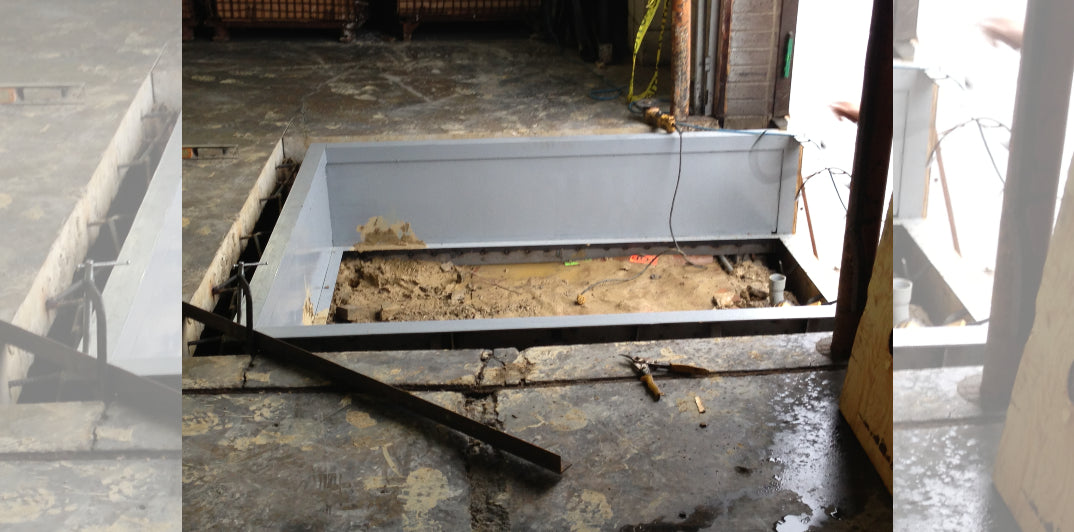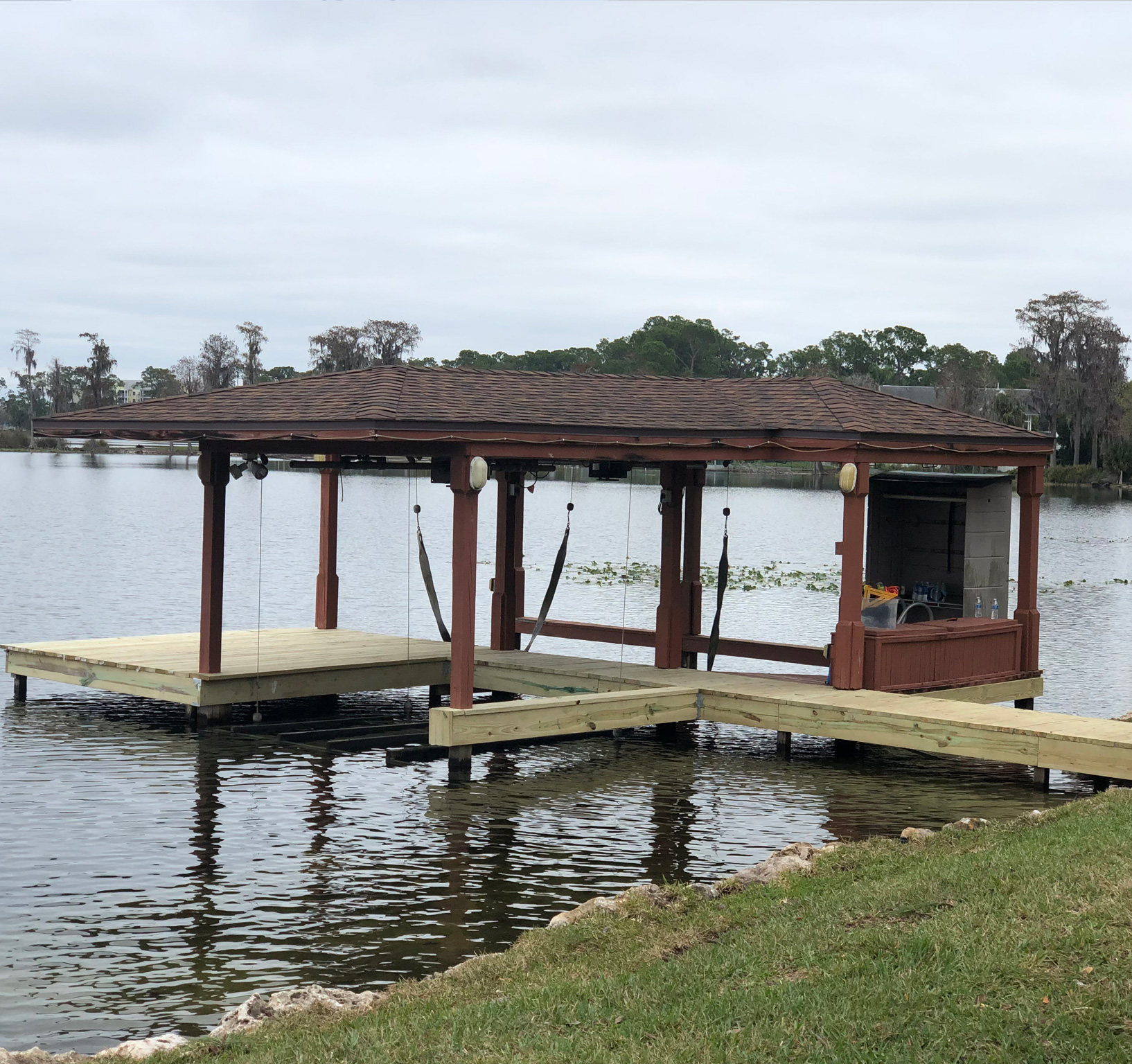How to Pick the Right Solution for Your Dock Repairs
How to Pick the Right Solution for Your Dock Repairs
Blog Article
Effective Dock Fixing Techniques: Ensuring Architectural Honesty
Guaranteeing the architectural integrity of docks via effective fixing strategies is paramount for the longevity and safety of marine facilities. Subsequently, picking the appropriate fixing materials, such as composite products and corrosion-resistant alloys, is essential for toughness.
Evaluating Dock Damage
Evaluating dock damage is a critical very first step in making sure the structural integrity and safety of any kind of docking center. This first evaluation involves a thorough assessment to recognize both noticeable and hidden damages. Secret elements to check out consist of the dock's structure, pilings, outdoor decking, and equipment. Each part has to be scrutinized for signs of wear, rot, corrosion, or other forms of destruction that could compromise the structural integrity.
Structural engineers or certified assessors typically perform these analyses making use of specialized techniques and tools. Underwater inspections might employ finder devices or remotely ran cars (ROVs) to detect immersed damage. Above water, visual inspections are enhanced by utilizing wetness meters and various other diagnostic tools to reveal underlying problems not instantly noticeable to the naked eye.

Choosing Repair Work Products
Selecting the ideal repair materials is a critical action in the dock reconstruction process, one that straight influences the longevity and efficiency of the fixed framework. Product choice need to be driven by elements such as environmental conditions, load-bearing demands, and compatibility with existing dock elements. Wood is a conventional choice for docks due to its natural resilience and aesthetic allure. Nonetheless, choosing the ideal kind of wood, such as pressure-treated lumber or naturally rot-resistant varieties like cedar or teak wood, is vital to stand up to marine environments.
Along with wood, composite products are progressively popular as a result of their toughness and low upkeep requirements. Compounds, usually made from a blend of plastic and timber fibers, offer superb resistance to rot, insects, and UV damages. For metal anchors, picking corrosion-resistant alloys such as galvanized steel or marine-grade aluminum is essential to stop rust and make sure structural stability in saline water problems.
Epoxy materials and marine-grade sealants are important for fixing cracks and sealing joints, offering a water-proof barrier and enhancing the dock's general stamina. By diligently selecting premium products, dock fixings can achieve resilient outcomes, therefore safeguarding against future degradation and guaranteeing risk-free, trustworthy usage.
Architectural Support Strategies
Effective structural reinforcement techniques are vital in making sure the security and durability of dock repair services. One essential approach includes the usage of steel or composite support bars (rebar) within concrete frameworks. Rebar supplies extra tensile stamina, stopping fractures and distributing loads much more evenly. This method is particularly efficient for anchors revealed to heavy lots or rough environmental problems.
Another crucial method is the application of fiber-reinforced polymers (FRP) These materials supply high strength-to-weight proportions and outstanding resistance to deterioration, making them suitable for reinforcing wood or concrete docks. FRP can be used in sheets or strips and adhered with epoxy resins to enhance architectural integrity.
Supporting and securing systems also play an important role in architectural reinforcement. Cross-bracing, making use of metal or wood beams, can neutralize lateral forces, lowering persuading and activity. Anchoring systems, such as helical piers or driven heaps, offer a secure foundation by moving loads to much deeper, extra steady dirt layers.
Finally, the assimilation of load-distribution plates can assist disperse weight more uniformly throughout the dock's surface, minimizing localized stress and anxiety points. These strategies collectively guarantee that anchors remain durable and safe, efficient in enduring the roughness of their functional environment.
Advanced Repair Service Approaches

An additional sophisticated strategy includes undersea welding, which enables fixings to be performed without the demand to dewater the area. This technique is especially beneficial for dealing with structural issues in submerged dock components, making certain minimal site web disturbance to procedures. Boosted welding methods, combined with robotic systems, deliver accuracy and integrity, consequently prolonging the lifespan of the dock.
Additionally, cathodic defense systems are applied to avoid deterioration in metallic dock structures. By utilizing sacrificial anodes or satisfied existing systems, these methods efficiently mitigate the electrochemical procedures that cause material deterioration.
Last but not least, advanced monitoring modern technologies, such as architectural health surveillance (SHM) systems, supply real-time data on the problem of dock structures. These systems enable proactive upkeep and timely treatments, eventually ensuring the lasting structural honesty of the dock.
Maintenance and Avoidance
Maintenance and avoidance are fundamental principles that underpin the longevity and safety and security of dock structures. Normal evaluations are paramount, enabling for early detection of damage, potential weak points, and ecological effects. A proactive method, including regular checks for deterioration, rot, and structural changes, mitigates expensive fixings and prolongs the dock's functional life.
Safety nets need to include blog here using safety coverings to steel parts to defend against rust and making use of cured timber to resist decay. Furthermore, guaranteeing appropriate drainage and air flow can protect against water buildup, which is a common reason for architectural degradation. Including quality materials and adhering to supplier guidelines during construction and repair service phases additionally play critical duties in enhancing resilience.

Educating personnel in dock upkeep finest practices guarantees consistent application of preventive procedures. Leveraging technical developments, such as drones for inspections and sensing units for real-time surveillance, can better improve upkeep initiatives. By prioritizing upkeep and avoidance, dock owners can guarantee architectural stability, operational safety and security, and economical administration over the dock's lifespan.
Conclusion
In final thought, keeping the structural integrity of marine centers requires thorough dock repair techniques. Advanced repair service strategies, coupled with regular maintenance practices, ensure the dock stays secure and functional under diverse environmental conditions.
Guaranteeing the structural stability of docks with efficient repair service methods is vital for the durability and special info safety of marine facilities.Picking the appropriate repair service products is a crucial action in the dock repair procedure, one that directly influences the longevity and performance of the repaired structure.Efficient structural reinforcement techniques are crucial in ensuring the security and durability of dock repair services. By prioritizing maintenance and avoidance, dock owners can guarantee structural honesty, functional security, and affordable management over the dock's life-span.
In final thought, preserving the structural honesty of marine facilities demands extensive dock repair work strategies.
Report this page